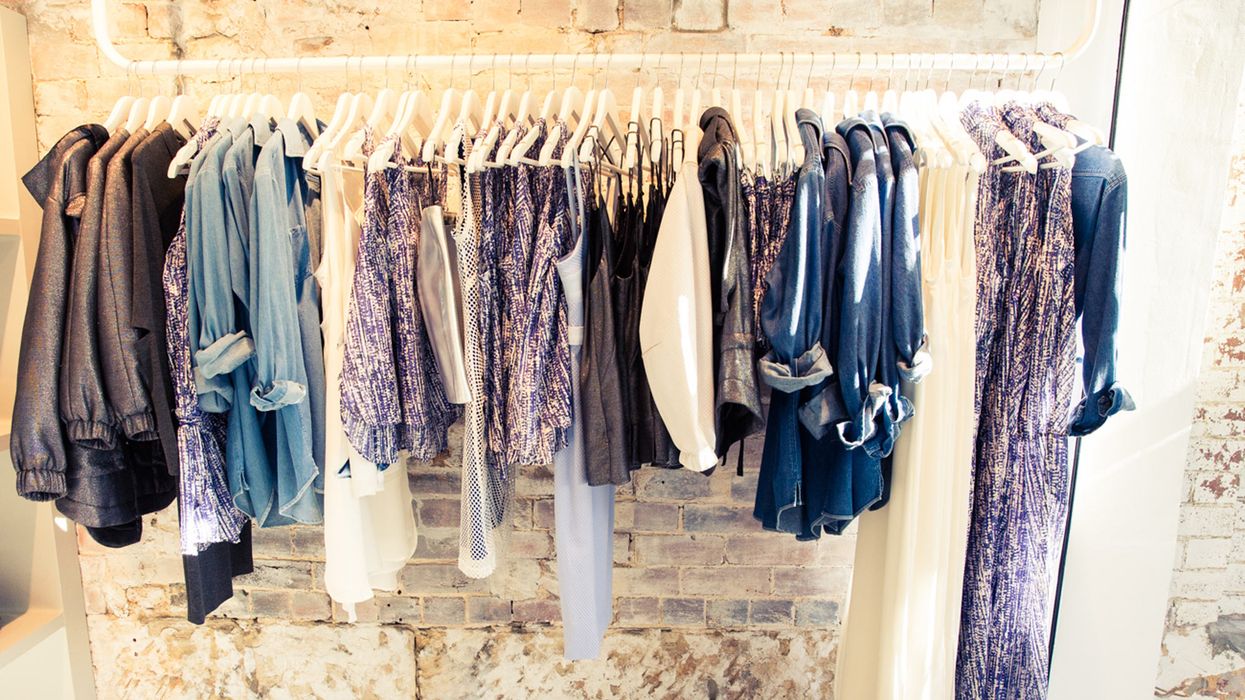The Impact of Social Media on Today's Boutique Fashion Trends
The Impact of Social Media on Today's Boutique Fashion Trends
Blog Article
Lasting Fashion: How Eco-Friendly Garments Is Forming the Future of Design
As the fashion sector encounters raising scrutiny over its ecological effect, the increase of lasting style uses an encouraging option that aligns style with environmental responsibility. boutique fashion. Just how does this motion really influence the future trajectory of fashion, and what obstacles exist ahead in its prevalent fostering?
Cutting-edge Sustainable Products
As the style market comes to grips with its environmental effect, ingenious sustainable materials have actually become an important option for reducing eco-friendly footprints. Among the most promising products are those originated from all-natural, renewable sources, such as natural cotton, hemp, and bamboo. These materials not just reduce dependency on fossil fuels yet also decrease dangerous chemical usage and water consumption. Organic cotton, for example, uses significantly less water than standard cotton and eliminates the demand for harmful chemicals, therefore preserving dirt health and biodiversity.
Along with plant-based materials, improvements in biofabrication have actually led to the growth of lab-grown fabrics. Mycelium natural leather, acquired from mushroom origins, offers a eco-friendly and versatile alternative to animal natural leather. Its production causes significantly lower carbon emissions and water use, making it a much more lasting choice for stylist seeking to line up with eco-friendly methods.
Recycled products are likewise getting traction, with polyester made from recycled plastic bottles standing for a substantial innovation. This innovation not just draws away plastic waste from garbage dumps and seas but also lowers energy consumption contrasted to generating virgin polyester. With each other, these products underscore the capacity for a much more lasting fashion business, leading the way for ecologically mindful layout and manufacturing.
Eco-Conscious Manufacturing
Structure on the developments in lasting materials, the fashion sector is likewise re-evaluating its manufacturing procedures to additionally decrease ecological effect. Key techniques include decreasing water usage, reducing carbon exhausts, and getting rid of harmful chemicals. By adopting closed-loop systems, suppliers aim to reuse water and energy efficiently, significantly lessening waste. The integration of eco-friendly energy resources, such as solar and wind power, right into production facilities further cuts dependence on fossil gas.
Another crucial aspect is the reduction of hazardous chemicals traditionally made use of in dyeing and ending up fabrics. Eco-conscious producers are moving towards plant-based dyes and waterless dyeing modern technologies, which not only secure neighborhood communities however likewise improve worker security. Technologies like electronic printing decrease material waste and power intake, supplying a cleaner alternative to typical techniques.
With the development of blockchain technology, companies can now give comprehensive understandings into their supply chains, making sure eco pleasant and honest practices at each action. As the need for eco-conscious products grows, suppliers are urged to innovate, making certain that the future of style is both lasting and stylish.
The Increase of Upcycling
Upcycling, a transformative method in sustainable style, involves artistically repurposing disposed of materials into brand-new, high-grade products. This cutting-edge strategy not just decreases waste yet likewise diminishes the need for basic materials, thereby decreasing the environmental influence of clothes production. By reconstructing and reimagining existing things, designers and style brand names have the ability to infuse originality right into their collections while promoting ecological duty.

Moreover, the upcycling motion has empowered small companies and independent designers, that usually lead in technology as a result of their dexterity and creative thinking. By profiting from the plentiful accessibility of unused products, these entities add to a circular economic climate, demonstrating that style can be both elegant and sustainable. Via upcycling, the market takes significant strides in the direction of a more mindful and responsible future.
Thrift Culture's Impact
The burgeoning second hand culture significantly improves the landscape of sustainable style, highlighting the significance of conscious usage. This social shift encourages customers to accept pre-owned apparel, thus reducing the need for new garment manufacturing and reducing ecological impact. Thrift purchasing not just prolongs the lifecycle of clothing however additionally lowers the carbon footprint connected with production, moving, and throwing away clothing.
A key element of second hand culture is its democratization of fashion. By providing a broad variety of designs from various ages at economical rates, second hand shops make fashion accessible to a wider target market. This ease of access cultivates a feeling of individuality and imagination, as customers mix and match special items to curate personalized wardrobes without contributing to the quick style cycle.
Furthermore, thrift culture promotes circularity in fashion, straightening with the principles of a circular economic climate. As more designers and consumers welcome second hand society, the style sector is forced to adapt, integrating webpage sustainable practices to meet the growing need for eco-conscious choices.

Future Trends in Fashion
Style's development is progressively shaped by technical developments and sustainability-driven initiatives. As consumers come to be a lot more eco mindful, the industry is reacting with groundbreaking advancements that redefine the future of design. One popular trend is the surge of digital style, where virtual garments can be put on in augmented truth settings, substantially reducing material waste. This change not only provides to the digital-savvy consumer yet also lessens the environmental footprint commonly related to garment production.
Furthermore, the combination of blockchain modern technology offers new opportunities in openness and traceability, allowing consumers to confirm the sustainability credentials of their garments. boutique fashion. This makes sure accountability in supply chains and promotes moral sourcing techniques. 3D printing is yet one more development that promises to change producing processes by making it possible for on-demand production, thus minimizing excess stock and waste
As these modern technologies mature, they are poised to change the style landscape, merging style with sustainability. The future of fashion, for that reason, lies in a smooth mix of innovation, development, and eco-friendly responsibility.
Verdict
The makeover of the style industry with sustainable methods shows a critical shift in the direction of ecological accountability. This development not only aligns style with ecological sustainability internet however additionally sets a precedent for future fads concentrated on responsibility and innovation.
As the style market encounters increasing analysis over its ecological influence, the rise of sustainable fashion supplies a promising choice that straightens style with environmental responsibility.As the fashion market grapples with its ecological impact, cutting-edge lasting materials have emerged as a critical service for minimizing environmental footprints. Together, these materials highlight the capacity for a more lasting style sector, leading the means for environmentally conscious style and production.
Building on the advancements in lasting products, the fashion market is likewise re-evaluating its production procedures to additionally lower ecological influence. boutique fashion.Upcycling, a transformative method in lasting style, entails artistically repurposing disposed of products right into new, premium products
Report this page